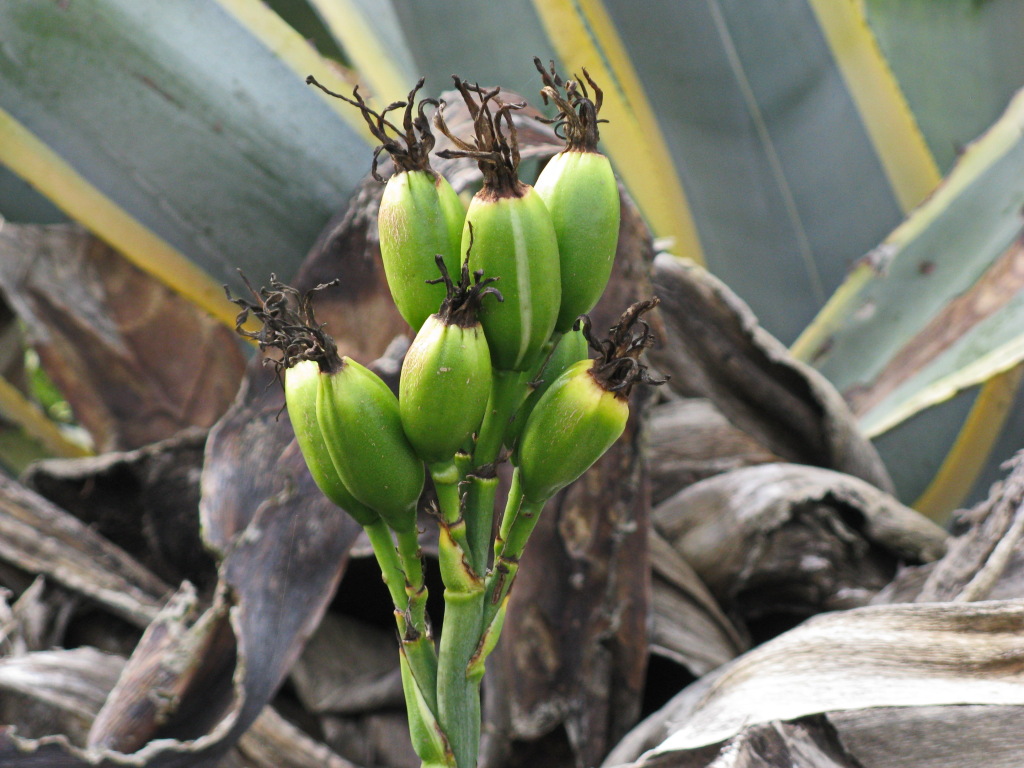Agave americana
L. Century PlantLarge rosetted herb, c. 2–3.5 m wide, spreading by rhizomes (suckers). Leaves 100–200 cm long and 15–25 cm wide. Inflorescence paniculate, arborescent, 5–10 m tall, scape bracts large, triangular. Flowers 7–10 cm long, greenish-yellow; perianth segments fused for 1–2 cm at the base, petals longer than sepals; stamens exserted by c. 2–5 cm; ovary 3–4.5 cm long. Capsule obloid, 4–6 cm long, 2–3 cm wide, beaked; seeds numerous, 7–8.5 mm long and 5–7 mm wide. Flowers Dec.–Feb.
MuM, Wim, GleP, VVP, VRiv, GipP, OtP, WaP, Gold, CVU, DunT, NIS, HSF, HNF, OtR. Also Qld, NSW. Native to southern North America. Widely planted and often persisting in abandoned gardens. Naturalized in near-coastal vegetation near Portland and Geelong, and in drier localities near Wangaratta and metropolitan Melbourne. The plants often produce bulbils instead of setting seed.
Plants with longitudinally white- or cream-striped leaves are referable to A. americana var. picta (Salm.) Terrac.; however, the distribution or presence of stripes is recorded as being variable within seedlings from the same parent plant, and the recognition of the variety seems to be of little value outside horticulture.
Conran, J.G.; Walsh, N.G. (1994). Agavaceae. In: Walsh, N.G.; Entwisle, T.J., Flora of Victoria Vol. 2, Ferns and Allied Plants, Conifers and Monocotyledons, pp. 718–720. Inkata Press, Melbourne.
 Spinning
Spinning




